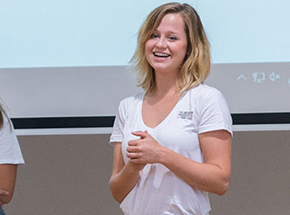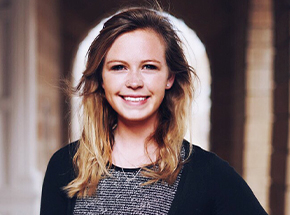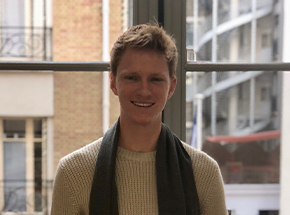- About AUP
- History of AUP
- Mission & Core Values
- Vision and Leadership
- AUP Recognition
- Alumni Success
- Campus Development
- Arts at AUP
- Policies & Guidelines
- Academics
- Undergraduate
- Graduate Programs
- MA in Diplomacy and International Law
- MA in Global Communications
- MSc in Human Rights and Data Science
- MA in International Affairs
- MA in International Affairs, Conflict Resolution, and Civil Society Development
- MSc in International Management
- MSc in Strategic Brand Management
- Find Your Thesis Advisor
- Previous Programs
- Cultural Program
- Faculty
- Summer School
- Research Centers
- The Center for Critical Democracy Studies
- The Center for Writers and Translators
- The George and Irina Schaeffer Center for the Study of Genocide, Human Rights and Conflict Prevention
- The Joy and Edward Frieman Environmental Science Center
- The Center for Media, Communication & Global Change
- Departments
- Academic Resources
- Academic Affairs
- Academic Calendar
- Academic Resource Center
- Library
- Registrar's Office
- Teaching and Learning Center
- Employer Network
- Accessibility & Accommodation Services
- Quai D'Orsay Learning Commons
- Paris as Classroom
- ACE Center
- Admissions
- Student Life
- Campus
- Get Involved
- Paris
- Support Services
- Student Development Help Desk
- Student Accounting Services
- Student Immigration Services
- Student Grievance Procedure
- Accessibility at AUP
- Diversity and Inclusion
- Health & Well-being
- Digital Student Handbook
- News
- Events
- AUP Giving
- Housing Offer for 2024-2025
- Housing | Spring 2024
- IRIS Project
- IT Services
- Alumni
- About AUP
- History of AUP
- Mission & Core Values
- Vision and Leadership
- AUP Recognition
- Alumni Success
- Campus Development
- Arts at AUP
- Policies & Guidelines
- Academics
- Undergraduate
- Graduate Programs
- MA in Diplomacy and International Law
- MA in Global Communications
- MSc in Human Rights and Data Science
- MA in International Affairs
- MA in International Affairs, Conflict Resolution, and Civil Society Development
- MSc in International Management
- MSc in Strategic Brand Management
- Find Your Thesis Advisor
- Previous Programs
- Cultural Program
- Faculty
- Summer School
- Research Centers
- The Center for Critical Democracy Studies
- The Center for Writers and Translators
- The George and Irina Schaeffer Center for the Study of Genocide, Human Rights and Conflict Prevention
- The Joy and Edward Frieman Environmental Science Center
- The Center for Media, Communication & Global Change
- Departments
- Academic Resources
- Academic Affairs
- Academic Calendar
- Academic Resource Center
- Library
- Registrar's Office
- Teaching and Learning Center
- Employer Network
- Accessibility & Accommodation Services
- Quai D'Orsay Learning Commons
- Paris as Classroom
- ACE Center
- Admissions
- Student Life
- Campus
- Get Involved
- Paris
- Support Services
- Health & Well-being
- Digital Student Handbook
- News
- Events
- AUP Giving
- Housing Offer for 2024-2025
- Housing | Spring 2024
- IRIS Project
- IT Services
- Alumni
Related Links
Faculty
Philip Golub is Professor of Political Science, Political Philosophy and International Relations at The American University of Paris. He obtained his MPhil (DEA) in International Relations and Contemporary History at University of Paris IV and his DPhil in International Relations at the University of Sussex.
WHAT Brought you TO AUP?
In the 1980s, I studied and taught at the Center for the Study of Conflict Strategy at Paris IV, later joining the Institute for European Studies of Université Paris 8, where I worked in the late 1990s and the 2000s, co-directing the doctoral research seminar in international relations. Later in the 2000s, I taught at Sciences-Po Paris, and had the good fortune to meet Professor Susan Perry, who invited me to teach in AUP’s graduate program in 2006. I found it very congenial here: I very much liked teaching in English, and I thought the liberal arts system offered an ideal environment for interactive learning. Smaller classes also allowed for more personalized work than in the French university system. I became a full-time professor at the University in 2013.
HOW DID YOU get INVOLVED IN JOURNALISM?
I was a co-founder of the daily newspaper the Asia Times, which was a brief but exciting adventure (the newspaper folded during the 1997 East Asian financial crisis), and then was appointed as Contributing Editor of the critical international monthly Le Monde Diplomatique. I wasn’t a journalist by training, but it was interesting and stimulating to move fluidly between the academic and journalistic worlds. With the Asia Times, I ended up running, in collaboration with other editors, a team of about 100 journalists from all over the world. I was living between Europe and East Asia, which gave me the opportunity to develop new knowledge, including empirical grounding for some of the theory I was working on. The long-term result of my engagement with East Asia was the book I published in 2016, East Asia's Reemergence, which studies the different stages of state and nation building in the region, from the early-modern period until today. With Le Monde Diplomatique, it was a different kind of exercise involving intellectual input into collective conversations about the editorial contents of the journal. I think the back and forth between quality journalism, commentary and academia can be enriching and mutually reinforcing.
WHAT FIRST SPARKED YOUR INTEREST IN EAST ASIA?
The seeds were planted when I was a kid. My parents were deeply involved in the anti-Vietnam War movement in the US, in the art world and beyond, and I grew up in an environment where questions of war and peace, hence of moral and political philosophy (and the justification of state authority), were debated endlessly in the studio. That early experience shaped my intellectual interests and my critical theoretical positioning in international social theory – hence my work on empire and imperialism, with a focus on the United States’ role in the Atlantic system in the 19th and 20th centuries, and my work on East Asia proper. So, in that sense, East Asia’s has always been on my mind, leading to an academic engagement that continues to this day. Once I began traveling to Asia more regularly and for longer periods of time, I could observe, first-hand, the fundamental changes that have become an object of great interest to me. East Asia in particular has been thoroughly transformed over the last 40 years and that transformation has world historical significance in the sense that it is altering – slowly, gradually, and in complex and uneven ways – the hierarchies that have been in place in the world system since the Industrial Revolution and 19th-century imperial globalization. This transformation interrogates our understanding of modernity and changes our reading of the trajectory of globalization.
How DOES YOUR RESEARCH INFORM WHAT YOU TEACH AT AUP?
The greater the research, the better the teaching. I think that’s true of all professors, in the sense that research renews teaching, gives it more substance, new angles, new orientations, new understandings and new nuances. At the same time, you learn during the process of teaching, because interactions with students enrich thinking and generate new ideas. It works both ways: the teaching can and does lead to the formulation of new research agendas and the research feeds into the teaching.
DO YOU COLLABORATE WITH YOUR STUDENTS ON PROJECTS?
I have often worked with students, notably graduate students, on various projects over the years. In some cases, this has led to deep and sustained intellectual collaborations, and the building of international institutional linkages. The most recent instance of this is my work with Dr. Zona Zaric G’15, a AUP graduate program alum, and the Institute of Social Theory and Philosophy of Belgrade and the Institute of Higher Studies of the University of Rijeka. This has led to seminars, joint teaching, as well as international conferences and a study trip to Croatia in 2022. There have also been other types of work with students, for instance the very productive collaboration with Anna Wiersma ’15 and G’16, who offered great help editing East Asia’s Reemergence.
Related
-

Rosie
Student
Read MoreRosie
Student
Having already studied here and having several friends with diplomas from the university I knew that it would be a quality experience
-

Beatrix
Student
Read MoreBeatrix
Student
I feel that the real-world experience that visiting professors bring to the classroom has an immense impact on students
-

Lance
Student
Read MoreLance
Student
I am here because I believe in fighting for a world where people can peacefully coexist while maintaining their individuality

